MO Tested: Scorpion EXO AT-950 Helmet Review

The do-it-all modular helmet
The beauty of modular helmets is the ability to have the best of both worlds; the convenience of a three-quarter helmet when you want it, with the protection of a full-face helmet when you need it. What more could you ask for, really? If you talk to the folks at Scorpion, there’s plenty more, like a modular helmet suitable for adventure touring rides. This modular would have all the benefits we’re accustomed to, but also be able to handle the occasional trip off the beaten path. With that, Scorpion took it upon itself to develop a modular helmet that lived up to the definition of modular: the EXO AT-950.
Designed for folks on each end of the adventure touring spectrum and those in between, the AT-950 shines in its ability to become adaptable to the conditions. If the ride will be mostly tarmac, remove the beak, keep the faceshield and, if needed, flip down the sun shade. If some light fire roads are forecast, the beak easily bolts back on. And if the ride errs heavily on the adventure side, you can keep the beak, remove the faceshield entirely, and pop on a pair of goggles. All the while you never lose the convenience of having a flip-up helmet. All for the very reasonable price of $289.95 ($269.95 for solid colors).
When you look at the AT-950, its appearance draws closer comparisons to MX helmets rather than street lids due to its oblong shape. Beyond the superficial, the AT-950 is available in XS-3XL sizes, relying on three different shell sizes and internal padding of different thicknesses to accommodate those size ranges. With a sub $290 price tag, don’t expect any exotic materials here – the shells themselves are like almost every other helmet shell out there: polycarbonate with dual density EPS.
If you’re familiar with Scorpion helmets, the inside of the AT-950 will look familiar. The KwickWick comfort liner is antimicrobial and wicks away moisture to help keep the rider cool. It also lines the cheekpads. The liner and the pads are soft to the touch and remain comfortable even after a long day in the saddle, with no irritation.
However, because only three shells accommodate seven different sizes, the thickness of the padding can cause the helmet to feel loose or tight, depending on the size. In my particular case I was originally sent a large helmet to test when normally I wear a medium. Scorpion informed me that both large and medium helmets use the same shell, varying only in cheekpad thickness. The remedy to the sizing gaffe was to send me the correct pads. Removal and installation was a simple matter of unsnapping the old pads and snapping in the new ones, and the helmet was more snug than before, but moving the helmet from side to side produced just a smidge more play than I’d like. If you’re expecting the kind of form fitting sizing you’d see on racing helmets, then look elsewhere.
The whole lot – liner and cheekpads – are removable and machine washable, should the funk left behind after an intense expedition in the dirt be too much to bear. The cheekpads are cleverly shaped to include pockets for speakers, too, so you can pair your communication system within the helmet.
As far as optics go, the AT-950 features a huge eyeport to provide great peripheral and downward visibility, and Scorpion’s EverClear no-fog faceshield is a convenient piece for those cold rides. As I’ve been using the helmet during California’s summer months, testing the no-fog capabilities has been difficult. However, I’ve been impressed with Scorpion shields in the past and their ability to keep fog at bay. From a convenience point of view, the drop-down tinted SunVisor, as Scorpion calls it, is a great addition to a modular helmet. Eliminating the need to carry an extra faceshield around (though Scorpion will have an accessory dark shield available soon), the SunVisor simply slides down with the flick of a finger on a tab on the left side of the helmet. And while its usefulness is without question, there is a very slight optical distortion with the shade down. My eyes adapted quickly, but the distortion might bother others more depending on their vision.
Of course, the two selling points of the AT-950 are its ability to adapt from a road helmet to an adventure helmet and the flip-up feature. Changing out the faceshield and/or adding the beak does require a tool, though the slot is wide enough to accommodate a coin if, for some reason, you didn’t pack a screwdriver with you on an adventure ride. Indicator markings are conveniently placed on the beak and the helmet’s side plate, making proper alignment simple. The beak does sit higher on the helmet than what you’d see on non-modular adventure touring or MX lids, but the extra space is needed to be able to raise the faceshield and/or the chin bar.
On the highway without the beak in place, there’s little buffeting, which is to be expected. With the beak in place, buffeting really depends on the motorcycle and the size of its windscreen. That said, even on motorcycles with no screen whatsoever, lift and buffeting with the beak in place is manageable.
Ventilation for the AT-950 doesn’t look very substantial, as a two-position chin vent is mated to a single intake port at the top of the helmet. Both channel air to the rider and exit via exhaust ports at the rear of the helmet. Surprisingly, there’s a decent amount of air that comes in, but I could really only notice when the ambient air was cool, or my head was sweaty. The included chin curtain blocks a significant amount of air from creeping up underneath the helmet, which is a complaint I’ve had about other modulars in the past. And despite the fact I wear earplugs whenever I ride, wind noise within the helmet isn’t as prevelant as, say, a road racing helmet.
Apart from simply trying on a pair of goggles with the faceshield removed, I can’t comment on its abilities as a true adventure helmet. Nor can I comment on the helmet’s protective properties in a crash (and I plan on keeping it that way!), but for a sub-$300 helmet with a little bit of do-it-all attitude, I’m happy with the AT-950.
I tended not to wear modular helmets in the past, despite the convenience they provide, because with the chin bar closed, the pivot points would squeeze my temples. This happened on more than one helmet, from more than one manufacturer. With the AT-950, however, the helmet is comfortable with the chin bar up or down (though Scorpion advises against riding with the chin bar raised). It’s not a helmet I would grab for serious off-road riding, but as a general purpose, do-it-all helmet, it impresses. Ventilation is adequate with the chin bar down (and clearly enormous with it up!), and having the fog-free shield and pull down dark visor is extremely convenient. It’s so convenient, in fact, that the AT-950 has turned into my go-to helmet if I’m heading out the door for any general riding excursions.
Available in two hi-viz colors, yellow and orange, the EXO AT-950 is also available in Phantom Silver, Matte Anthracite, Matte Black, and Hypersilver. Visit the Scorpion website for purchasing information.

Troy's been riding motorcycles and writing about them since 2006, getting his start at Rider Magazine. From there, he moved to Sport Rider Magazine before finally landing at Motorcycle.com in 2011. A lifelong gearhead who didn't fully immerse himself in motorcycles until his teenage years, Troy's interests have always been in technology, performance, and going fast. Naturally, racing was the perfect avenue to combine all three. Troy has been racing nearly as long as he's been riding and has competed at the AMA national level. He's also won multiple club races throughout the country, culminating in a Utah Sport Bike Association championship in 2011. He has been invited as a guest instructor for the Yamaha Champions Riding School, and when he's not out riding, he's either wrenching on bikes or watching MotoGP.
More by Troy Siahaan



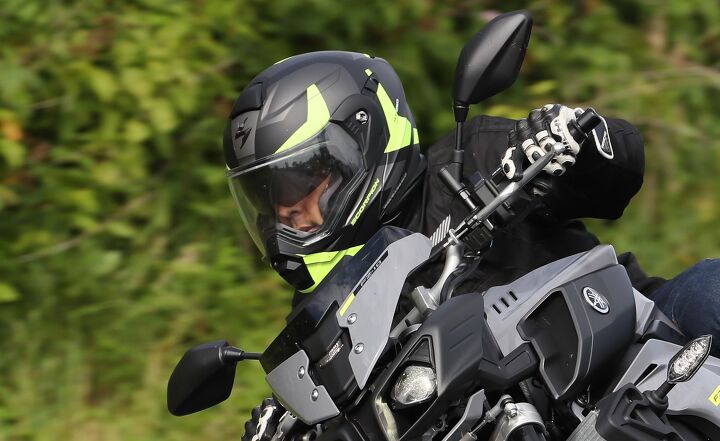


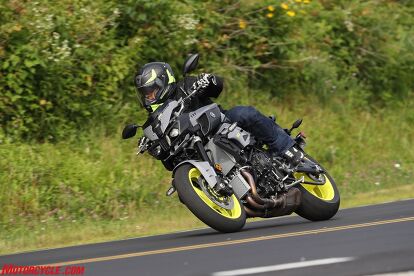






































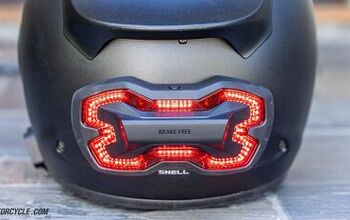
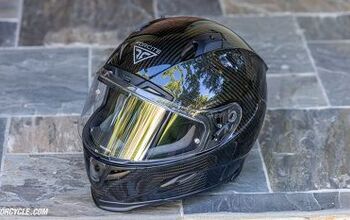
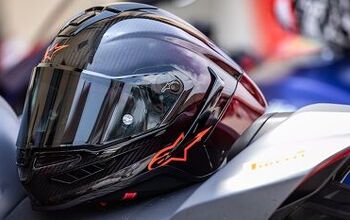
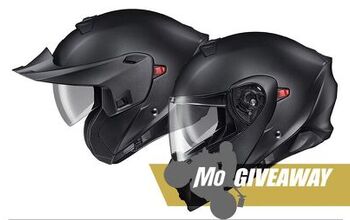









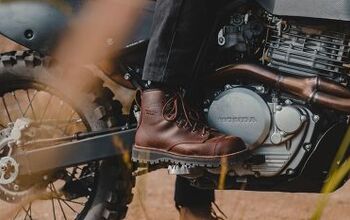


Comments
Join the conversation
No mention was made nor can I see in the pictures, how the helmet straps to the head...quick release or d-ring?
I wish every helmet write-up would comment on the head shape it best fits. In my case it would be long oval and very few helmets fit me well especially a modular. I do have a Zeus 3000 modular which is more oval than round and fits OK but still get the hot spot on the forehead. My ADV helmet is a LS2 Pioneer which is pretty long oval and actually fits pretty good though noisy as all get out even with earplugs.